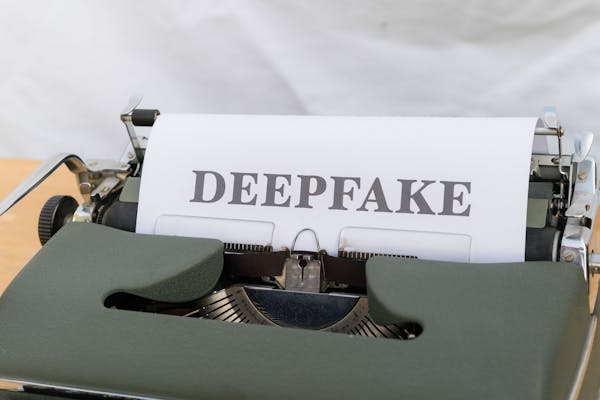In the digital age, the rapid advancement of technology has led to the emergence of synthetic media, a groundbreaking innovation that is transforming how we create, share, and consume content. Synthetic media refers to digitally created or manipulated content, including text, images, audio, and video, often generated using artificial intelligence (AI) and machine learning algorithms. This technology is capable of producing highly realistic and convincing content, blurring the lines between real and fabricated media. As synthetic media becomes increasingly sophisticated, its effects on society, culture, and the economy are profound and multifaceted. This article explores the development of synthetic media, its various applications, and the potential effects of synthetic media on different aspects of our lives.
The Evolution of Synthetic Media
The concept of synthetic media is not entirely new, as the manipulation of images and videos has existed since the advent of photography and cinematography. However, the rise of AI and machine learning has significantly accelerated the capabilities and accessibility of synthetic media. One of the most notable advancements in this field is the development of deepfakes, a type of synthetic media that uses deep learning techniques to create hyper-realistic audio and video representations of individuals. Deepfakes can seamlessly alter facial expressions, lip-sync audio, and mimic voices, making it difficult for viewers to distinguish between real and fake content.
The evolution of synthetic media has been driven by several key factors:
- Advancements in AI and Machine Learning: The development of sophisticated AI algorithms, such as Generative Adversarial Networks (GANs), has enabled the creation of highly realistic synthetic media. GANs consist of two neural networks—a generator and a discriminator—that work together to produce and refine content until it becomes indistinguishable from real media.
- Increased Computational Power: The availability of powerful hardware and cloud computing resources has made it possible to train and deploy complex AI models at scale. This has democratized access to synthetic media tools, allowing individuals and organizations to create high-quality content with relative ease.
- Access to Large Datasets: The abundance of digital content available online provides a vast repository of data that can be used to train AI models. This data includes images, videos, audio recordings, and text, all of which can be used to generate new synthetic media.
- Growing Interest and Investment: The potential applications of synthetic media have attracted significant interest from tech companies, researchers, and investors. This has led to increased funding and research efforts aimed at improving the quality and capabilities of synthetic media technologies.
Applications of Synthetic Media
Synthetic media has a wide range of applications across various industries, including entertainment, advertising, journalism, education, and beyond. Some of the most prominent uses of synthetic media include:
1. Entertainment and Film Production
The entertainment industry has been quick to adopt synthetic media technologies to enhance storytelling and create new experiences for audiences. In film production, synthetic media can be used to de-age actors, create realistic digital doubles, and generate entire scenes or characters that would be difficult or expensive to produce using traditional methods. For example, the Star Wars franchise used synthetic media to recreate the likeness of deceased actor Peter Cushing in “Rogue One: A Star Wars Story.”
2. Advertising and Marketing
Brands and marketers are leveraging synthetic media to create personalized and engaging content for consumers. AI-generated influencers, virtual brand ambassadors, and customized advertisements are becoming increasingly common. These synthetic personas can interact with audiences in real-time, providing a unique and interactive experience. For instance, virtual influencers like Lil Miquela and Shudu have amassed large followings on social media, blurring the lines between reality and fiction.
3. Journalism and News Reporting
Synthetic media has the potential to revolutionize journalism by enabling the creation of realistic simulations and reconstructions of events. This can be particularly useful for visualizing complex news stories, such as natural disasters or scientific discoveries. However, the use of synthetic media in journalism also raises ethical concerns, particularly regarding the authenticity and accuracy of the content.
4. Education and Training
In the realm of education, synthetic media can be used to create immersive and interactive learning experiences. Virtual tutors, AI-generated educational content, and realistic simulations can enhance the learning process and make complex subjects more accessible. For example, medical students can use virtual reality (VR) and synthetic media to practice surgical procedures in a safe and controlled environment.
5. Art and Creative Expression
Artists and creatives are exploring the possibilities of synthetic media to push the boundaries of traditional art forms. AI-generated art, music, and literature are becoming increasingly popular, challenging our understanding of creativity and authorship. The use of AI in the creative process raises questions about the role of the artist and the value of human creativity in an era of synthetic media.
The Effects of Synthetic Media
The rise of synthetic media has far-reaching implications for society, culture, and the economy. While this technology offers numerous benefits, it also presents significant challenges and risks. The effects of synthetic media can be categorized into several key areas:
1. Misinformation and Disinformation
One of the most concerning effects of synthetic media is its potential to spread misinformation and disinformation. Deepfakes and other forms of synthetic media can be used to create convincing but false content, leading to the manipulation of public opinion and the erosion of trust in media sources. For example, deepfake videos of political figures making inflammatory statements can be used to sway elections or incite violence.
The proliferation of synthetic media also makes it difficult for individuals to discern the authenticity of the content they encounter. As a result, the public may become increasingly skeptical of all media, leading to a phenomenon known as “truth decay.” This erosion of trust in media institutions can have serious consequences for democratic societies, where informed decision-making relies on access to accurate and reliable information.
2. Privacy and Security Concerns
Synthetic media raises significant privacy and security concerns. The ability to create realistic digital representations of individuals without their consent poses a threat to personal privacy. Deepfakes can be used to create fake pornography, impersonate individuals for fraudulent purposes, or blackmail victims. The potential for abuse is particularly concerning for public figures, who may be targeted with malicious synthetic media campaigns.
In addition to privacy concerns, synthetic media also presents cybersecurity challenges. The use of deepfakes in phishing attacks, social engineering, and other malicious activities can undermine trust in digital communications and pose a risk to organizations and individuals alike.
3. Ethical and Legal Challenges
The rise of synthetic media has sparked a host of ethical and legal debates. Questions about authorship, intellectual property, and the moral implications of using AI to create content are at the forefront of these discussions. For example, who owns the rights to AI-generated art or music? Should creators of synthetic media be held accountable for the potential harm caused by their content?
Legal frameworks have struggled to keep pace with the rapid development of synthetic media technologies. Governments and regulatory bodies are grappling with how to address the challenges posed by synthetic media, including issues related to defamation, fraud, and privacy. Some jurisdictions have implemented laws specifically targeting deepfakes and other forms of synthetic media, but enforcement remains a challenge.
4. Impact on Employment and the Creative Industry
The widespread adoption of synthetic media technologies has the potential to disrupt various industries and job markets. In the creative sector, for example, the use of AI to generate art, music, and writing could reduce demand for human creators. While synthetic media offers new opportunities for innovation and creative expression, it also raises concerns about the future of human creativity and the value of human labor in an increasingly automated world.
Similarly, synthetic media could impact the job market in other sectors, such as journalism, advertising, and customer service. AI-generated content and virtual assistants can perform tasks traditionally done by humans, potentially leading to job displacement and changes in the nature of work.
5. Cultural and Social Impacts
The effects of synthetic media extend beyond the technical and legal realms, influencing culture and society at large. The ability to create hyper-realistic digital representations challenges our understanding of reality and authenticity. As synthetic media becomes more prevalent, it may reshape cultural norms and expectations, influencing how we perceive and interact with the world.
For example, the rise of virtual influencers and AI-generated celebrities blurs the lines between reality and fiction, creating new forms of identity and social interaction. The use of synthetic media in entertainment and art also raises questions about the nature of creativity and the role of human artists in a digital age.
Navigating the Future of Synthetic Media
As synthetic media continues to evolve, it is crucial for society to navigate its potential benefits and challenges thoughtfully. While the technology offers exciting opportunities for innovation and creativity, it also presents significant risks that must be addressed. Several strategies can help mitigate the negative effects of synthetic media:
- Developing Robust Verification Tools: To combat the spread of misinformation and disinformation, it is essential to develop and implement tools for verifying the authenticity of media content. AI-driven verification systems, digital watermarks, and blockchain-based solutions are among the technologies being explored to authenticate media and ensure transparency.
- Promoting Media Literacy: Educating the public about the existence and potential dangers of synthetic media is critical. Media literacy programs can help individuals develop the skills needed to critically evaluate the content they encounter and discern between real and fake media.
- Establishing Ethical Guidelines and Regulations: Governments, tech companies, and industry stakeholders must work together to establish ethical guidelines and regulatory frameworks for the responsible use of synthetic media. These guidelines should address issues related to privacy, security, intellectual property, and accountability.
- Fostering Responsible Innovation: The development and deployment of synthetic media technologies should prioritize ethical considerations and the well-being of society. Researchers and developers should be mindful of the potential consequences of their work and strive to create technologies that benefit humanity while minimizing harm.
- Encouraging Collaboration and Dialogue: Addressing the challenges posed by synthetic media requires collaboration across sectors and disciplines. Open dialogue between technologists, policymakers, artists, and the public can help identify solutions and ensure that synthetic media is used in a way that aligns with societal values.
Conclusion
The rise of synthetic media represents a transformative shift in the way we create, share, and consume content. While the technology offers exciting possibilities for innovation and creativity, it also presents significant challenges and risks. The effects of synthetic media on society, culture, and the economy are complex and multifaceted, necessitating a thoughtful and proactive approach to managing its impact.
As we navigate the future of synthetic media, it is essential to strike a balance between embracing the benefits of this technology and addressing its potential harms. By fostering responsible innovation, promoting media literacy, and establishing ethical and legal frameworks, we can harness the power of synthetic media for positive change while safeguarding against its negative effects. In doing so, we can ensure that synthetic media contributes to a more informed, creative, and inclusive society.




